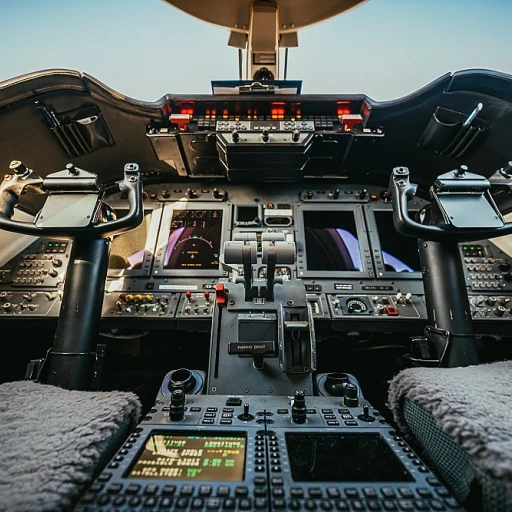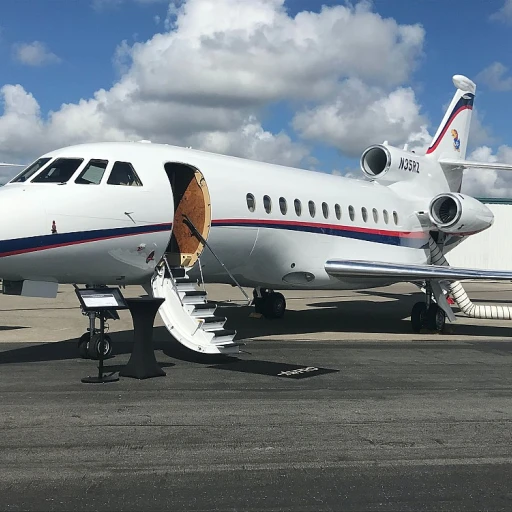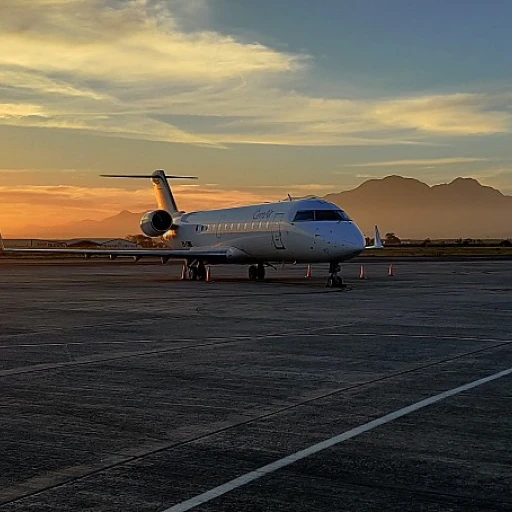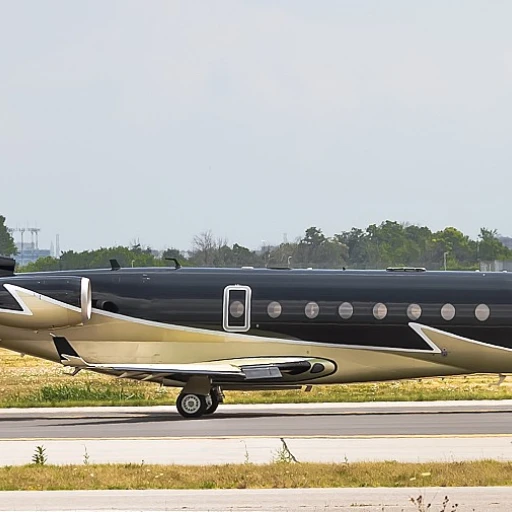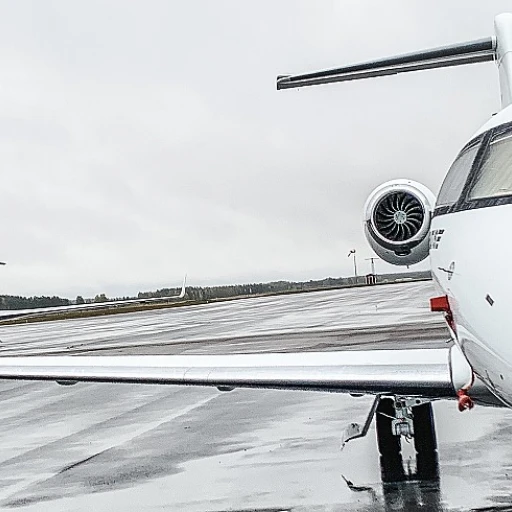
The basics: what defines a private jet?
The essential characteristics
When people talk about types of private jets, they tend to think 'luxury in the sky.' But what really defines a private jet? Is it just the fancy seating and VIP treatment? Well, there's a lot more to it. A private jet, or business jet, is a jet aircraft designed specifically for transporting small groups of people. These jets offer benefits like flexibility in scheduling, access to more airports, and the ability to leave from smaller airfields.
The flexibility and speed factor
Private jets come in various sizes and styles. What's common among them is the incredible speed and range they offer. For instance, a Gulfstream G650 can fly up to 7,000 nautical miles at speeds reaching up to 610 mph. Some smaller jets like the Embraer Phenom 300 might only fly 2,000 nautical miles but can land in more regional airports, making them perfect for short-distance business travel. Because of these advantages, many companies invest heavily in such aircraft to maintain flexibility and efficiency in their operations.
How seating and cabin sizes vary
Another aspect that defines a private jet is its seating and cabin size. Smaller jets like the Cessna Citation Mustang usually seat 4-5 people and offer limited cabin space. On the other hand, larger jets like the Boeing Business Jet can seat up to 50 people and come with multiple living areas, offices, and even bedrooms. And let’s not forget the long range jets like the Bombardier Global 7500, which offer luxurious seating, extended cabin space, and can fly continuously for about 7,700 nautical miles.
To understand more about what makes each type of private jet unique, you may want to explore further. Our in-depth guide on the best private jets can offer you a comprehensive understanding of each category.
learn more about the best private jets hereLight jets: the nimble flyers
The nimble flyers: why choose light jets
Light jets are the perfect choice for short to mid-range flights, combining speed, flexibility, and economy. Typically, they offer seating capacities for 4 to 8 passengers, making them an ideal option for both business and leisure trips. With cruising speeds between 400-500 mph and a range of up to 2,200 nautical miles, you can comfortably travel between cities like New York and Miami or Los Angeles and Denver. Their smaller size allows them to access regional airports that larger jets cannot reach, providing you with more convenient travel options.
One of the most popular models in this category is the Cessna Citation Mustang, which has proven itself as a cost-effective and versatile aircraft. Another notable mention is the Embraer Phenom 300, widely praised for its performance and comfort, often referred to as a flying office due to its state-of-the-art technology and connectivity features. According to a report by Jetcraft, light jets account for about 45% of the total private jet market, underscoring their popularity.
Case study: HondaJet Elite
The HondaJet Elite is a remarkable example of innovation in the light jet category. Its unique over-the-wing engine mount design significantly reduces cabin noise, enhancing passenger comfort. It seats up to 7 people and has a range of approximately 1,437 nautical miles, making it perfect for short hops across states. The Elite variant also boasts a higher maximum cruise speed of 485 mph and advanced avionics with a Garmin 3000 system, setting it apart from the competition.
The luxury within
Despite their size, light jets don’t sacrifice luxury. They often feature well-appointed cabins with leather seats, wood veneers, and state-of-the-art entertainment systems. For instance, the Cirrus Vision Jet offers a panoramic window view, an elegant interior, and a quiet ride, ideal for private jet charters. These jets are designed to provide a seamless blend of luxury and efficiency, ensuring a pleasant experience from takeoff to landing.
Midsize jets: the versatile performers
Performance and range
When it comes to midsize jets, we're talking about a category of private aircraft that strikes a perfect balance between comfort, range, and price. These jets are the go-to for many business travelers who need to hit multiple cities in one sweep without sacrificing the perks of luxury.
Let’s dive into some numbers to paint a clearer picture. The Beechcraft Hawker 800XP is a standout performer in this segment. It offers a range of about 2,542 nautical miles and can comfortably reach speeds of around 514 mph. That’s New York to Los Angeles without a sweat. Such range covers most domestic routes, which makes it a favorite.
Space and comfort: not too small, not too big
Space. It's what you crave during long-haul flights, and midsize jets deliver in spades. Take the Cessna Citation Excel as a prime example. This jet offers a spacious cabin that caters to the needs of up to 8 passengers, with plenty of room to relax, work, or even have a bit of shut-eye.
Then there’s the Gulfstream G150, which is known for its roomier aisles and seating. It manages to give a feel of a larger jet while keeping within the midsize category. Its cabin width allows passengers to move around without feeling cramped, making it a superb option for both short and medium-haul flights.
Amenities on board
Midsize jets like the Bombardier Learjet 60XR don’t skimp on amenities. Passengers can often enjoy high-speed Wi-Fi, a full galley for in-flight meals, and plush seating that can typically recline into beds. These comforts make it easier to transition between destinations, keeping travelers refreshed and productive.
Many jets in this class also come equipped with advanced avionics and redundant systems for improved safety, further boosting their appeal. Connectivity is not an afterthought; most midsize jets offer state-of-the-art inflight entertainment systems and satellite communication options.
Cost considerations
Now, let's talk costs. Buying a midsize jet like the Embraer Legacy 500 might set you back around $20 million. For those who prefer to charter, expect to pay somewhere between $3,000 to $5,000 per flight hour. While this might seem steep, it represents a more economical choice compared to heavy jets, providing almost the same level of comfort and range.
If middle-of-the-road pricing with above-average performance appeals to you, then midsize jets are worth considering. They offer excellent value for money and meet the needs of both business and leisure travelers effectively. For those interested in how these jets stack up against their smaller counterparts, our previous discussion on light jets is a must-read.
Super midsize jets: the sweet spot
Performance and range
Super midsize jets, often celebrated as the sweet spot in private aviation, offer an excellent balance between performance, range, and capacity. These jets are designed to cover significant distances without compromising on speed or luxury. Super midsize jets can typically fly up to 3,500 nautical miles, bridging the gap between regional travel and intercontinental adventures.
Popular models include the Gulfstream G280 and the Bombardier Challenger 350. According to experts, these aircraft usually cruise at speeds around 540-580 mph, ensuring that your travel time is minimized.
Comfortable cabin experience
In addition to their impressive range, super midsize jets boast spacious cabins that cater to comfort and productivity. They generally seat between 8 to 10 passengers, offering ample room for meetings, relaxation, or even sleep. For example, the Dassault Falcon 2000 series is known for its generous cabin size and luxurious amenities.
Passengers can expect features like fully reclining seats, WIFI connectivity, and advanced entertainment systems, making the flight experience as enjoyable as the destination itself.
Versatility and value
One of the primary advantages of super midsize jets is their versatility. They can efficiently operate from shorter runways, giving access to smaller, less congested airports closer to your final destination. This flexibility is a significant advantage for busy executives and frequent flyers.
While super midsize jets like the Cessna Citation X may come with a higher price tag compared to light jets, their balance of range, speed, and cabin comfort provide excellent value for many travelers. These jets offer a fine blend of luxury and functionality, making them a popular choice for both business and leisure flights.
Expert insights
As per a report by the National Business Aviation Association (NBAA), super midsize jets are becoming a favorite among a growing number of private jet users due to their ability to complete diverse mission profiles. Aviation expert Richard Aboulafia noted, “Super midsize jets strike an excellent balance for many flyers looking for both performance and comfort without the operational limitations of larger aircraft.”
If you're looking for more detailed information on which private jet might suit your needs, you can check discovering the best private jets for luxury and long-range travel for an in-depth comparison.
Heavy jets: the long-haul champions
The category kings of private jets
The heavy jets are truly the giants of the skies, offering a blend of immense space, superior comfort, and unparalleled range. These aircraft are designed for long-haul flights and transcontinental journeys, making them perfect for international business travel or luxurious family vacations.
Exploring the heavy hitters
When you're aiming for crossing oceans without breaking a sweat, heavy jets like the Gulfstream G650 or the Bombardier Global 7500 are your best bet. The Gulfstream G650, for instance, boasts a stunning range of up to 7,000 nautical miles and can fly at a speed of Mach 0.925, making it one of the fastest and furthest flying private jets available.
On the other hand, the Bombardier Global 7500 is not to be outdone. This jet can comfortably carry up to 19 passengers and cover distances of up to 7,700 nautical miles. According to Bombardier's official specs, the aircraft's maximum speed clocks in at 710 mph, ensuring that long flights are not just bearable but actually enjoyable.
Luxury that goes the distance
The interiors of these heavyweight champs are no less impressive. Take Dassault's Falcon 8X, for example, which offers an extended cabin length of 13 meters for added comfort. It provides multiple cabin configurations to suit different types of travel, whether you need a conference area for business meetings or a resting quarters for a peaceful flight.
Another gem in this category is the Boeing Business Jet (BBJ) series. These are essentially converted airliners, providing massive private jet spaces for up to 25-50 passengers. They have ultra-long-range capabilities, with some models capable of flying over 6,000 nautical miles without the need for refueling.
Expert insights
According to aviation expert Richard Aboulafia from the Teal Group, heavy jets are a cornerstone in private aviation. “Their ability to fly longer distances without the need for multiple refueling stops makes them invaluable for global business leaders and high-net-worth individuals who demand efficiency, exclusivity, and the highest levels of comfort in their travel experiences,” he says.
Furthermore, a report by Argus International highlights a growth trend in the utilization of heavy jets, citing increased demand in intercontinental travel and the need for spacious cabins with advanced amenities as key factors.
Real-world examples
Let’s bring it down to real-world applications. Imagine you've got business meetings lined up across multiple continents over a span of a week. A heavy jet like the Gulfstream G550 would allow you to kick off from Los Angeles, have a pit stop in Tokyo, and make it to a closing meeting in London, all while ensuring you're well-rested and equipped with your necessary travel comforts.
Or consider the lifestyle aspects: flying a Bombardier Global 6500 for a family vacation from New York to Paris without compromising on space or amenities. The jet's capacity to accommodate 17 passengers ensures that there's room for everyone, plus extras like a dedicated sleeping area and full-sized bathrooms make the journey feel like a breeze rather than an ordeal.
Ultra long range jets: the ultimate in luxury
Luxury on wings: ultra long range jets
When it comes to luxury and performance in aviation, the elite-class ultra long range jets are in a league of their own. These aircraft are perfect for those who need to travel vast distances without frequent stops, often covering more than 6,000 nautical miles in one go. They're the epitome of flying experiences for business moguls, celebrities, and anyone who values time and efficiency.
Consider the Gulfstream G650ER. This jet is a marvel, capable of flying from New York to Tokyo nonstop at a cruising speed of around 611 mph. It's equipped with a spacious cabin that can be configured into several living spaces, including a sleeping area, conference room, and luxury kitchen. According to a study by Jets.com, the G650ER has a maximum range of more than 7,500 nautical miles, and it leads the market in terms of performance and comfort.
Bombardier Global 7500 is another top contender in this exclusive category. Lauded for its ultra-long range of 7,700 nautical miles, the Global 7500 redefines long distance travel. It features the largest cabin in its class, ensuring passengers travel in the lap of luxury. Notably, the jet's revolutionary wing design allows for smooth and controlled flight, enhancing passenger comfort over long hours in the air.
Another prominent player, Dassault Falcon 8X, offers a range of 6,450 nautical miles. What sets the Falcon 8X apart is its superior fuel efficiency without compromising performance, making it an ideal choice for the environmentally-conscious elite. Philippe Guillon, a senior aviation analyst at Dassault, emphasizes that the jet's three-engine configuration adds flexibility and safety, especially for transoceanic flights.
The Boeing Business Jet (BBJ) line also deserves mention here. The BBJ 787-8, for instance, can fly between 9,945 and 10,100 miles—more than enough to connect virtually any two cities in the world with just a single layover. However, owning one is akin to having a flying mansion, complete with showers, bedrooms, and even conference suites.
Choosing an ultra-long-range jet isn't just about range and distance. For many, it's about experiencing unparalleled luxury and the efficiency of getting across the globe swiftly and comfortably. Whether it's the technological advancements of Gulfstream, Bombardier, or Dassault, or the sheer grandiosity of Boeing, these flying marvels provide superior service and travel experiences like no other.
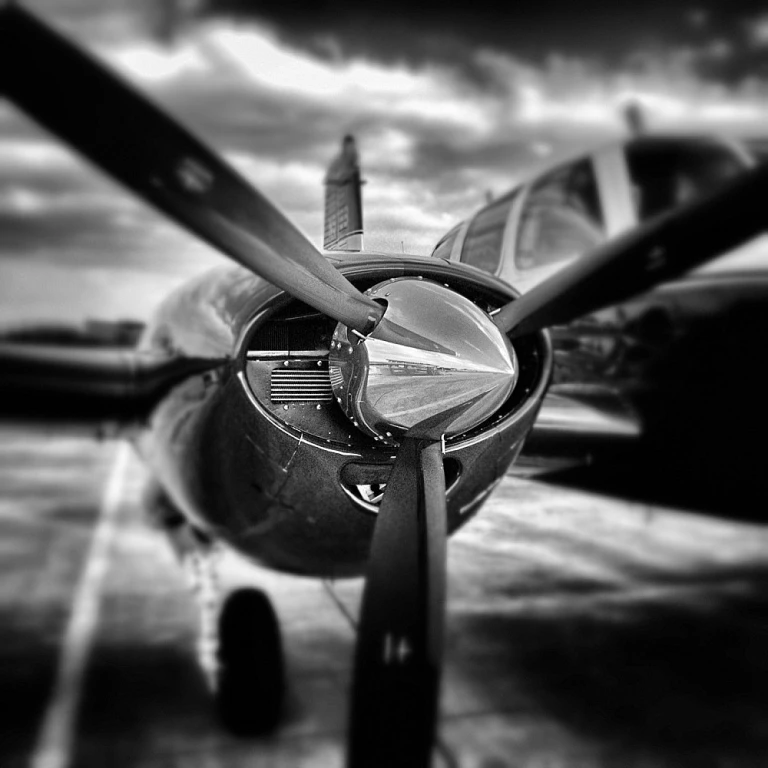
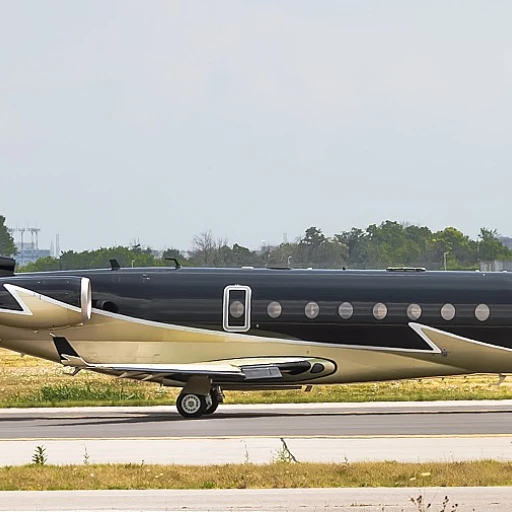


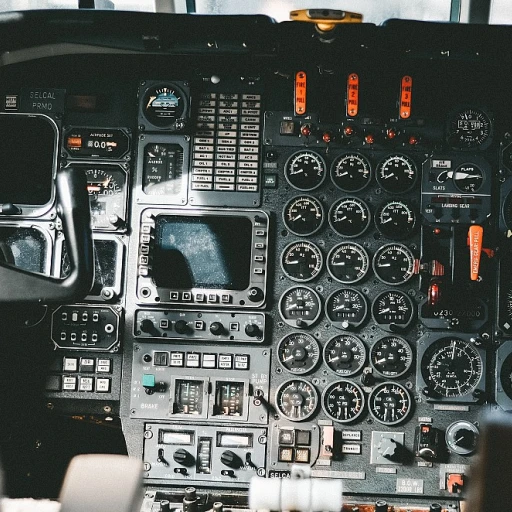
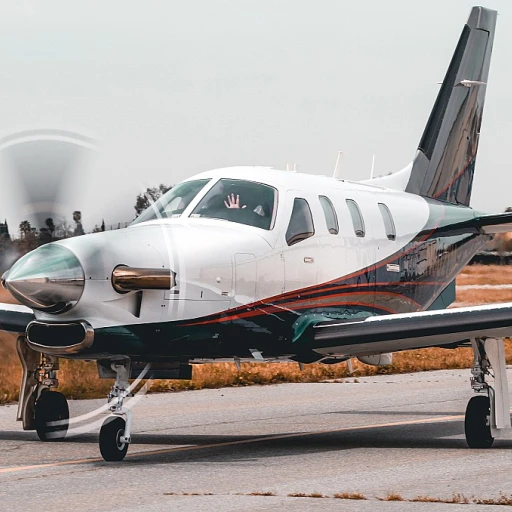
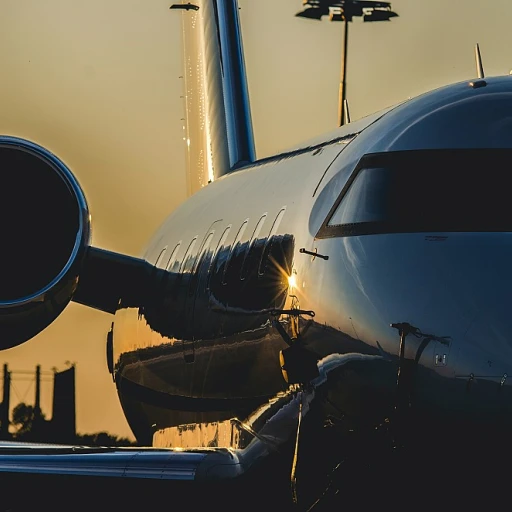
-large-teaser.webp)
